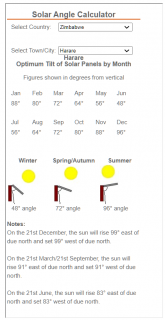hello Bud from Harare. Been an airline pilot for many years but interested in renewable energy and eager to learn. Im looking at build a 3 k or 5 k system, and id like to use LiFePO4 as the battery system. been watching a few videos on youtube to learn a bit more.. i have a question or two
i note the LiFePo4 batteries are made up in many of the videos. people add a BMS and some have cell balancing that is added to the battery with an lcd screen to show individual cells performance - very cool.
first question- what is the charging pattern of LiFePO4. is it constant voltage?
what should i look for in pairing up this kind of battery with an inverter. ? i want to make a 24 v battery.
ive seen Will P on youtube using an LV2424 from MPP. I contacted MPP to ask them what kind of inverter would be suitable , as we use 220/230 v ac in Harare, and they refered me to an inverter that was compatible to a certain bms only. So im confused. Is the important aspect that the charging ststem must be programmable to suit the battery in question or do i need an inverter that only takes a certain battery and BMS?
any help in my understanding would be great
Regards
Bud
i note the LiFePo4 batteries are made up in many of the videos. people add a BMS and some have cell balancing that is added to the battery with an lcd screen to show individual cells performance - very cool.
first question- what is the charging pattern of LiFePO4. is it constant voltage?
what should i look for in pairing up this kind of battery with an inverter. ? i want to make a 24 v battery.
ive seen Will P on youtube using an LV2424 from MPP. I contacted MPP to ask them what kind of inverter would be suitable , as we use 220/230 v ac in Harare, and they refered me to an inverter that was compatible to a certain bms only. So im confused. Is the important aspect that the charging ststem must be programmable to suit the battery in question or do i need an inverter that only takes a certain battery and BMS?
any help in my understanding would be great
Regards
Bud




